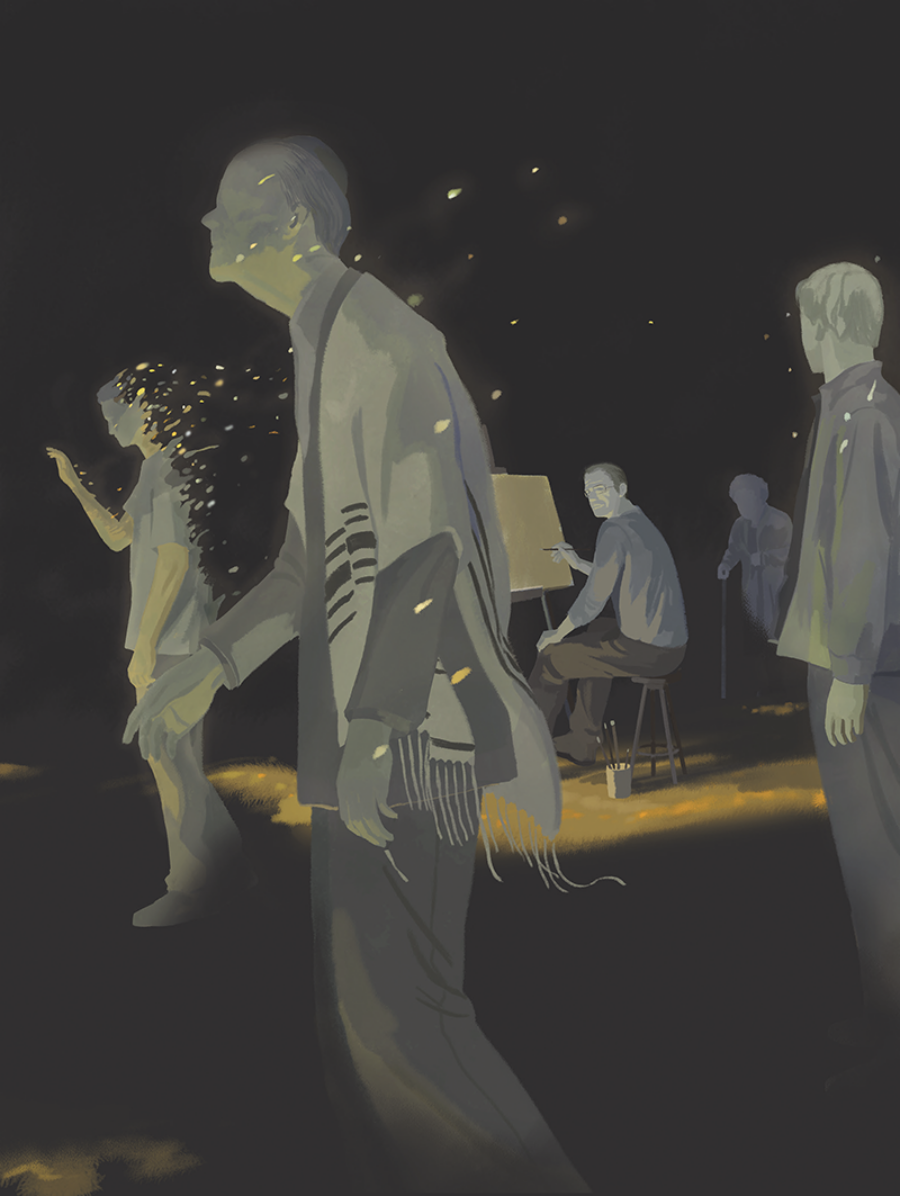
Illustration by Xiao Hua Yang
Drawing From Life
Called out of retirement. Already onto other things. Netflix, Roku haiku, one patient Basho letter at a time. Onto berating the orange sun god, with his changeable guard of hagiographers fanned out in ray formation on TV. Onto tending his garden with a side of memoirs, the ones he got up early not to write. Onto the dog, who smiled more as it aged. Onto the grandchild that his daughter Dina might still have with Eitan, whom he keeps calling Itai. Onto anything other than painting, ever since the school he ran closed, not due to plague but lack…






































































































